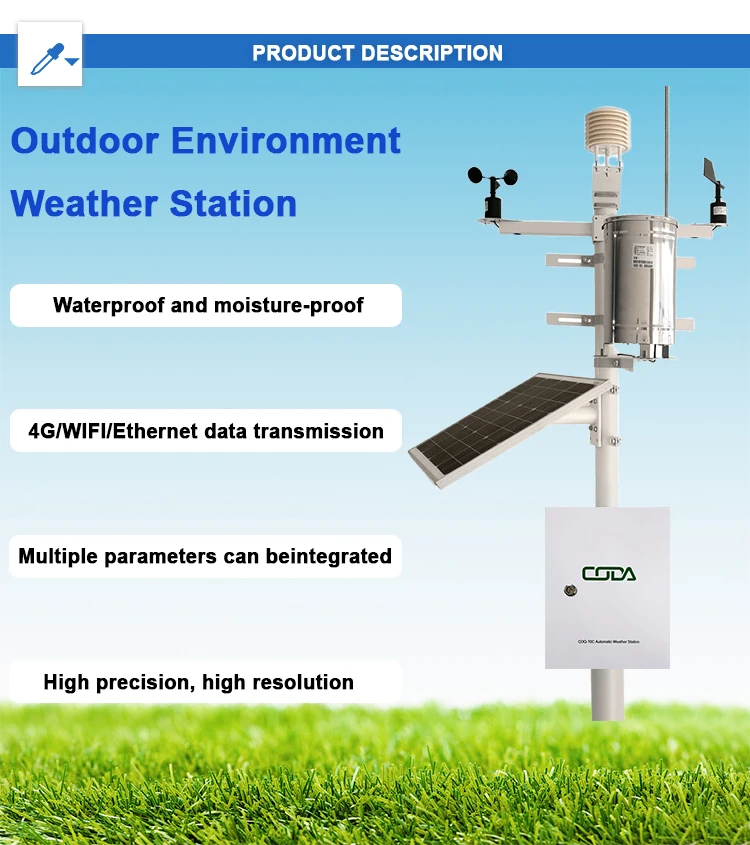
# Advantages and Disadvantages of Automatic Weather Stations
## Introduction
Automatic Weather Stations (AWS) have revolutionized the way we collect and analyze meteorological data. These advanced systems provide continuous, real-time weather information without the need for constant human intervention. While AWS offer numerous benefits, they also come with certain limitations that users should consider.
## Advantages of Automatic Weather Stations
### 1. Continuous Data Collection
One of the primary advantages of AWS is their ability to collect weather data 24/7 without interruption. Unlike manual stations that require human observers, automatic systems can operate around the clock, providing a comprehensive dataset.
### 2. High Accuracy and Precision
Modern AWS are equipped with sophisticated sensors that deliver highly accurate measurements. These systems minimize human error and can detect subtle changes in weather conditions that might be missed by manual observations.
### 3. Remote Monitoring Capabilities
AWS can be installed in remote or hazardous locations where continuous human presence would be impractical or dangerous. Data can be transmitted wirelessly to central monitoring stations, allowing meteorologists to track weather conditions in real-time from anywhere in the world.
### 4. Cost-Effective in the Long Run
While the initial investment in an AWS might be significant, these systems typically prove cost-effective over time. They reduce labor costs associated with manual data collection and require minimal maintenance compared to traditional weather stations.
### 5. Rapid Data Processing and Distribution
Automatic systems can process and distribute weather information almost instantaneously. This rapid data availability is crucial for weather forecasting, agricultural planning, and emergency response situations.
## Disadvantages of Automatic Weather Stations
### 1. High Initial Costs
The sophisticated technology and equipment required for AWS come with substantial upfront costs. This can be a significant barrier for smaller organizations or developing countries with limited budgets for meteorological infrastructure.
### 2. Maintenance and Calibration Requirements
While AWS require less human intervention than manual stations, they still need regular maintenance and calibration to ensure data accuracy. Sensor drift and equipment malfunctions can occur, potentially leading to inaccurate readings if not addressed promptly.
### 3. Vulnerability to Technical Failures
Being electronic systems, AWS are susceptible to power outages, communication failures, and other technical issues. In harsh weather conditions, components may fail or become damaged, interrupting data collection.
### 4. Limited Flexibility in Measurement Parameters
Most AWS are designed with specific measurement capabilities. Adding new sensors or modifying the system to measure additional parameters can be challenging and expensive compared to manual stations where observers can adapt more easily.
### 5. Potential Data Gaps
When an AWS malfunctions, there may be significant gaps in the data record until the issue is resolved. Unlike manual stations where observers might be able to estimate conditions during equipment failures, automatic systems typically provide no data when not functioning properly.
## Conclusion
Automatic Weather Stations represent a significant advancement in meteorological data collection, offering numerous advantages in terms of continuous operation, accuracy, and remote monitoring capabilities. However, potential users must carefully consider the high initial costs, maintenance requirements, and technical vulnerabilities associated with these systems. The decision to implement an AWS should be based on specific needs, available resources, and the importance of real-time, automated data collection for the intended application. As technology continues to improve, many of the current disadvantages are likely to be addressed, making AWS an increasingly attractive option for weather monitoring worldwide.